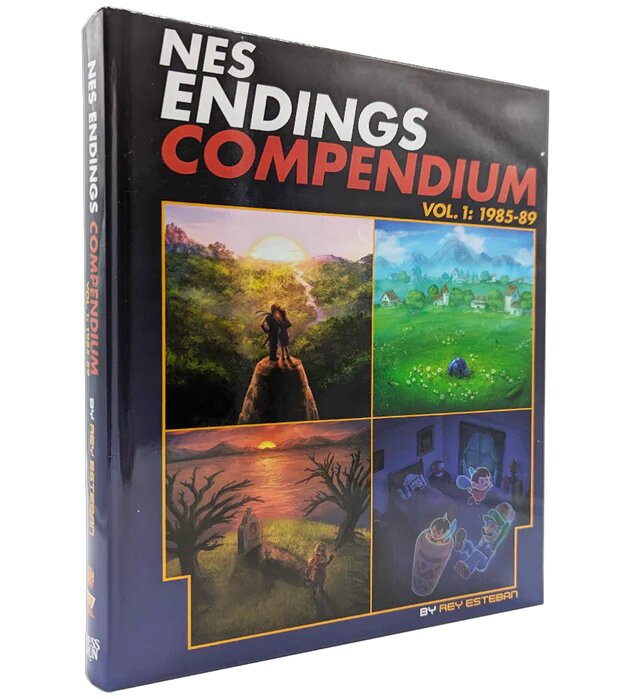Books about video games are becoming more and more common and there are a lot of interesting ones that have been released recently. One that should catch your attention is the NES Endings Compendium from Press Run, a book that covers the years 1985-1989, and discusses over 248 game endings in a unique way. Not only does it go over the endings, but it also rates them and explores variations based on region, difficulty and more.
For many people, the NES was the beginning of their gaming history and the endings of the games were something to strive to see. Yet many didn’t manage to reach those endings as kids, either from games they owned or rented, and the endings remained elusive things. What were these mythical images? Were they worth what we were playing for?

Well, as the NES Endings Compendium reveals, while some were amazing, many were not. More often than not, a game will earn a 1-star rating for its ending, but the ending will be discussed so people understand why it got the rating it did. I will also be honest and admit I personally disagree with some of the ratings given to the games, as I feel that some were too harsh. Still, it is important to note that not every game can be Mega Man II and have a truly amazing ending.


That said, there is an argument made to explain why the ratings were given, and an interesting touch is how different endings can raise the rating, while a regional variant can lead to a vastly improved or reduced rating at times. For those curious, the style of the book was inspired by gaming magazines from the 90s such as Electronic Gaming Monthly, Nintendo Power and GameFan and it shows in how the endings are reviewed and broken down. It does explain a lot of the methodology of the reviews, even if I still disagree with some reviews such as the coverage of the ending of Ultima III.

With regards to the regional variations in endings, a nice addition is the explanation of why things were changed, such as for religious imagery, or how an entire story was completely different. This is seen with games like Karnov and Blaster Master, which were vastly different in Japan, while sometimes discussion of localization will occur without a regional difference in ending, such as with 1943, where the nature of the game was controversial in Japan for depicting Japan as villains. Additionally, some endings are further broken down, such as Rambo’s and details are given for how to get the different endings and story paths.



The NES Endings Compendium covers the years 1985 to 1989 and lists 248 endings of a wide variety of genres, such as platformers, shmups, RPGs and more, and this is just the first volume. An interesting detail is that the book took two years to produce and part of this was due to testing the different endings and the different regions, with the different regional versions also listed in the table of contents. It would be nice to see more Japan-only games that have seen fan translations and become popular in the West get covered in the next volume, which is in production now, but if not, it is understandable.


The book was bound well, and made of sturdy material, and the copy sent was packed to prevent damage well. There is some more content such as additional information and some bonus content to provide more content to get you your money’s worth. The NES Endings Compendium is available on the Limited Run store here, and it should be noted that the book is not limited, with copies at their warehouse available for shipping right away.
If you like classic video games and the allure of what came at the end, then The NES Endings Compendium is a must-get. A well-researched book, this comes recommended.
Disclaimer: A review copy was provided

